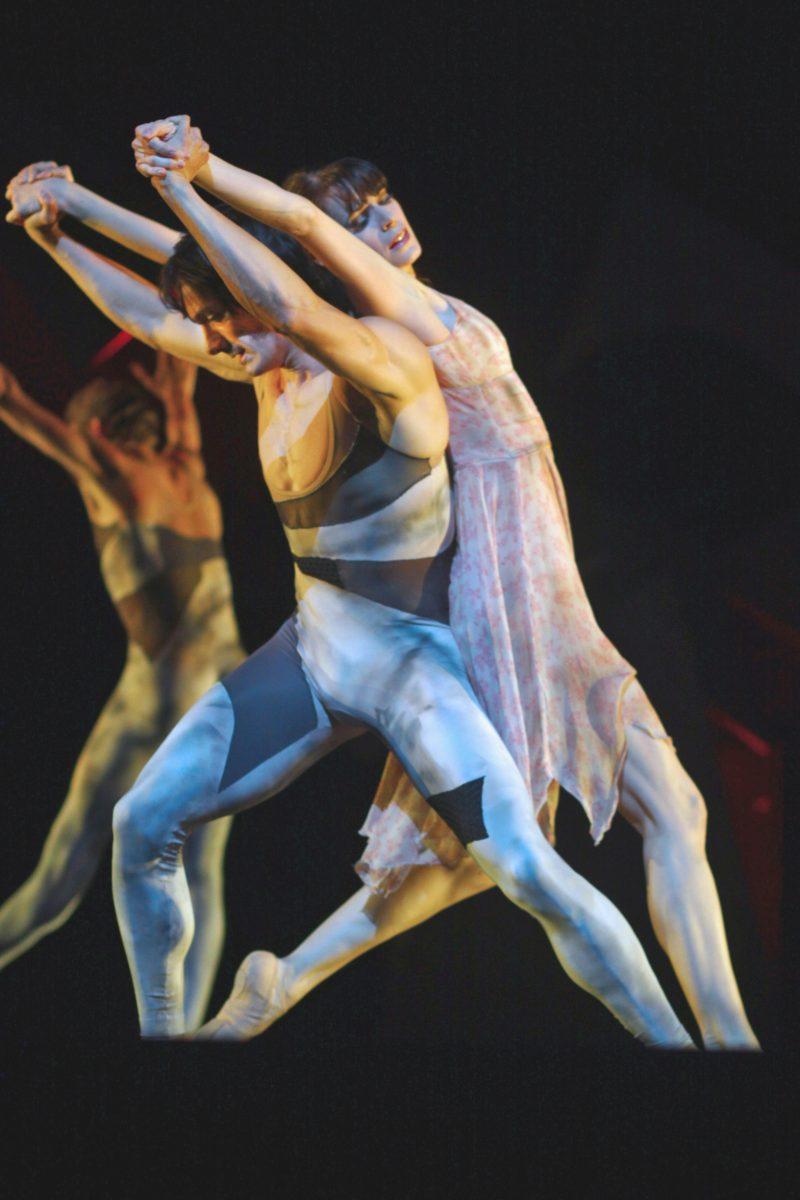Inspiration can happen anywhere.
Just ask Carolina Ballet’s artistic director Robert Weiss. He saw the Nasher Museum’s exhibit “Picasso and the Allure of Language” and saw an opportunity. He decided to build a new ballet around themes in Picasso’s various works.
Choreographed by Weiss and principal dancer Attila Bongar, the ballet is broken into four sections. J. Mark Searce, director of the University’s music department, was tapped to compose original scores for “Guernica” and “Song of the Dead.”
“Salome” opens the ballet. Modeled on the Biblical tale, four characters populate the stage. Salome (Randi Osetek) flirts with Herod (Bongar) after receiving her wish. Herod flirts right back, to the consternation of his wife (Rossana Nesta Gahagan). Salome dances a pas de trois with the king and his slave (Eugene Barnes) merely to show off her seductive skills. The quartet work well together and give a sense of the emotions bubbling over behind the usual sanitized version.
“Guernica” settles somberly over the stage. The jagged set design references the famed painting, and a pinprick spotlight illuminates a female dancer (Lara O’Brien) laying downstage. Five male dancers sit with their backs to her before moving towards and dancing around her. The men’s movements are strong and aggressive, while those of the woman are writhing and delicate. The piano overlays an ominous discordant tone, and Bongar’s choreography allows movements that encompass violence and hopelessness.
The third section, “Picasso’s Harlequins,” draws on commedia dell’arte tropes. Two couples intertwine and break apart, demonstrating jealousy, love and forgiveness while acting to the back row. The twisting, ever-changing relationships parallel those of “A Midsummer Night’s Dream.” The couples, Harlequin (Gabor Kapin) and Columbine (Margaret Severin-Hansen) and Pierrot (Pablo Javier Perez) and Pierrette (Erica Sabatini), make the interactions thoroughly entertaining to watch. This section was my favorite. It brought comedy and provided a light counterpoint to the previous piece. Anyone who says there’s no acting in dancing would change their mind after viewing this sequence.
In between the foursome’s trials, other harlequins provide interludes. Clad in white bodysuits decorated with dark lines, both men and women danced, jumped and performed cartwheels. Occasionally, one of the aforementioned principals ran through the scene. The dancers generally paired off to dance in unison or within a straight line. These scenes were joyous and energetic.
“The Song of the Dead” closes out the program. The company opens by marching back and forth in rows, wearing brown costumes with handwriting details on garment panels. Midway through, the principal couple is introduced, dancing in white costumes decorated with hot pink scribbles. The company pairs did much lifting and partnering. A melancholy pas de trois was danced slowly and pensively. Piano, violin and woodwinds proved musical accompaniment.
A pas de deux near the middle features a male and female dancer, each of whom were of the general company. The push-pull interaction of the two became evident when the girl mimed a scream and the man attempted to protect her. Later, she rolled on the floor towards downstage while the man curled around her, needing her. At various times, the two would separate and dance apart, but eventually get back together.
I was very impressed with the way Carolina Ballet interpreted Picasso’s themes. Weiss managed to convey the deeper meaning of Picasso’s work through movement. These movements accurately depict the artist’s intentions of provoking dialogue.
I also liked the juxtaposition of the pieces. “Guernica” was appropriately somber, given the subject matter, while the following piece involving harlequins was much more upbeat and fun. The tones flew from reverent to bleak despair, then segueing into frivolity and then mourning.
Carolina Ballet’s “Picasso” encompasses themes from Picasso’s works, and conveys a genuine gamut of emotion in doing so.








